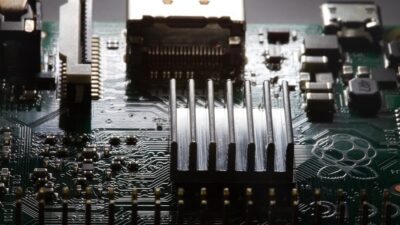In today’s fast-paced digital landscape, organizations strive for efficiency, speed, and real-time responsiveness. With the explosive growth of internet-connected devices, and the emergence of applications that require rapid data processing, reducing latency has become crucial. This is where edge computing makes its entrance, revolutionizing the way data is handled, transmitted, and processed.
Understanding Latency
Latency refers to the delay in data transmission from one point to another and is measured in milliseconds. High latency can impede performance in various services, from online gaming to financial transactions and telemedicine. In industries where time-sensitive decisions must be made, even a tiny lag can lead to substantial losses or missed opportunities.
The Rise of Edge Computing
Edge computing addresses the limitations of traditional cloud computing by decentralizing data processing. Instead of relying entirely on centralized data centers, edge computing leverages local nodes—servers, gateways, and other devices that are closer to end-users. Here’s how it changes the game:
1. Localized Data Processing
By processing data at the edge of the network, closer to the source, organizations can significantly reduce the distance that data needs to travel. This localization minimizes the time it takes for data to move back and forth, thereby decreasing latency. For applications such as autonomous vehicles and remote surgeries, where every millisecond counts, edge computing is invaluable.
2. Real-Time Analytics
Edge computing enables organizations to analyze data in real-time, as it gets generated. For example, smart sensors can collect data about environmental conditions and process it on-site without needing to send it back to a cloud server for analysis. This immediacy allows for quicker decision-making, increasing operational efficiency and responsiveness.
3. Improved Bandwidth Utilization
Transmitting large volumes of data to a central data center can result in network congestion and higher costs. Edge computing alleviates this issue by performing initial data filtering and processing locally before sending only the most relevant information to the central server. This not only reduces bandwidth usage but also optimizes network performance.
4. Enhanced Security and Privacy
With data being processed closer to its source, sensitive information can remain on local devices rather than being transmitted over vast networks. This not only minimizes the risk of interception during transmission but also provides organizations with better control over their data privacy and security measures.
5. Resilience Against Outages
In scenarios where internet connectivity is limited or intermittent, edge computing allows for continued operation. Localized processing means that devices can continue to function even if they lose connection to the cloud, ensuring that business operations remain uninterrupted.
6. Scalability
As businesses grow, they frequently need to accommodate increasing data volumes without a linear increase in latency. Edge computing offers scalability by allowing organizations to deploy local computing resources strategically as demand changes. This can be a game-changer in industries like manufacturing, where real-time data processing is essential for automation and production efficiency.
Industries Benefiting from Edge Computing
Several industries stand to gain significantly from edge computing, including:
-
Healthcare: Remote medical procedures and patient monitoring can function optimally with diminished latency, ensuring quicker responses during critical situations.
-
Retail: Enhanced customer experiences through personalized offerings and real-time inventory management can thrive with reduced lag.
-
Telecommunications: By optimizing data flow for mobile users, telecom companies can provide faster services and manage higher traffic effectively.
- Manufacturing: The integration of IoT devices in smart factories benefits from immediate data analysis for predictive maintenance and operational efficiency.
Conclusion
As the demand for instant access to data continues to surge, edge computing emerges as a vital solution for reducing latency and enhancing operational efficiency. By decentralizing data processing and facilitating real-time decision-making, businesses can forge ahead in a competitive landscape. As organizations increasingly adopt edge computing, the advantages it brings will fundamentally transform industries, driving innovation and higher standards of performance across all sectors. The race to minimize latency is on, and edge computing is the clear frontrunner in this quest for efficiency and speed.



